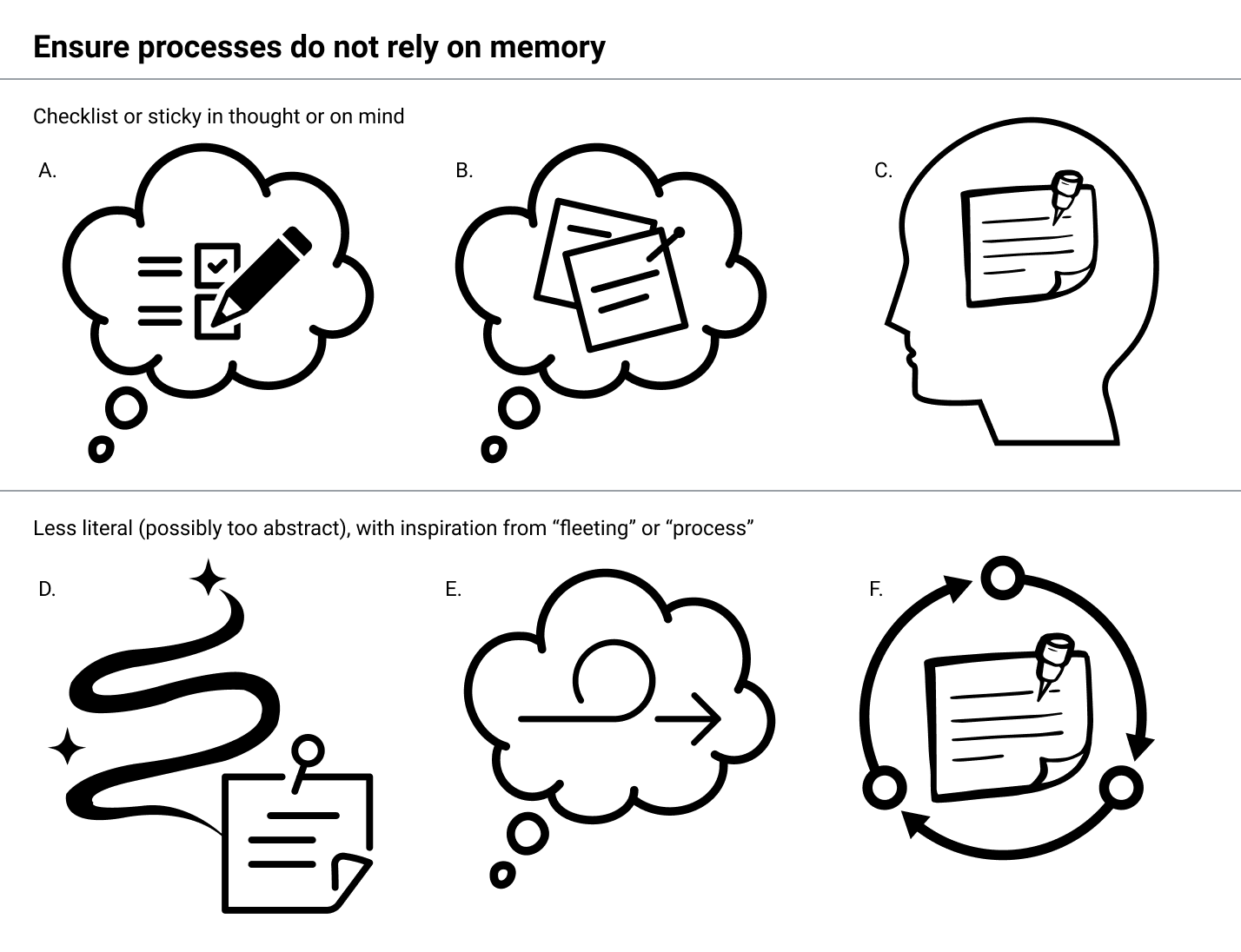- From: Lisa Seeman <lisa1seeman@gmail.com>
- Date: Tue, 9 Feb 2021 13:09:38 +0200
- To: Rain Michaels <rainb@google.com>
- Cc: public-cognitive-a11y-tf <public-cognitive-a11y-tf@w3.org>
- Message-ID: <CAKExBMLy=tiWj=StVQ8MSNQ-oa_ocGna0wi7Pg7XL1sPwTMzMw@mail.gmail.com>
Thank you Rain. I love option b as the sticky notes really represent remembering things over other cognitive processes. To me the check boxes represent deciding things and other executive functions which are covered in others objectives. All the best Lisa On Fri, Feb 5, 2021 at 11:22 PM Rain Michaels <rainb@google.com> wrote: > Hello, > > Following our quick brainstorm about icons to represent "ensure processes > do not rely on memory," I have added a couple of explorations into the Content > Usable Summary Icons > <https://docs.google.com/document/d/1aRoYev1aAIHhIq37Itt96ueBwLh5zXMUeJBYxL0MCkQ/edit> Google > doc. > > I've also attached the exploration image directly to this email if that is > easier than accessing the Google Doc. > > Once I receive comments, I can revise if as needed. > > Thank you, > > Rain > > [image: Not rely on memory.png] > Super long alt text for the image: > Six illustrations, three that are more direct and three that are more > abstracted: A. thought bubble with a checklist inside, B. Thought bubble > with pinned sticky notes inside, C. Person's head with a sticky note in the > place of a brain, D. Sticky note with a magic tail evoking the concept of > leaving, E. Thought bubble with a moving process showing the thought going > away, F. Process symbol with a sticky note inside of it >
Attachments
- image/png attachment: Not_rely_on_memory.png

Received on Tuesday, 9 February 2021 11:10:30 UTC